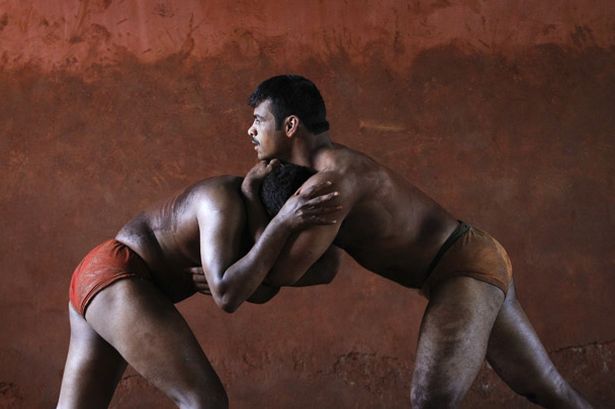Akhara culture, a traditional form of entertainment, is fast disappearing from the city due to the onslaught of TV, video culture and modern gymnasiums.
“Ab pehalwan kahan hain? Logoon mai pehalwani ka shauk ab kahan raha. Akharey isliye tutatey ja rahein hain. (Where are the wrestlers now? Wrestling is not people’s hobby. Therefore, akharas are vanishing gradually,” said Suraj Pehalwan Chaurasia who has given more than 25 years of his life to Rashtriya Akhara at Massacre Ghat.
“The new generation has no inclination towards the traditional culture of wrestling. The mushrooming of gyms has suppressed this art which is far better than modern wrestling,” Chaurasia added.
There was a time when the industrial city had more than 60 akharas. About a dozen of them were like ‘gharanas’. Prominent among them were Hazi Addha Pehalwan ka Akhara at Talaq Mohal, Chandu Pehalwan ka Akhara at Bhagwat Das Ghat, Bachhu Pehalwan ka Akhara at Goliyana, Gangu Baba ka Akhara at Jajmau, Shival Akhara near Kotwali and Rashtriya Akhara at Massacre Ghat. Presently, most of the wrestling arenas have lost their identity and vanished.
“There are three main akharas that are following the age old practices of wrestling. The Rashtriya Akhara at Massacre Ghat, Chandu Pehalwan ka Akhara at Bhagwat Das Ghat and the one at Golaghat,” said Chaurasia. “Even spectators are not very much interested now. Earlier, around 100 people used to come and watch a wrestling competition, but now the number has decreased to around 20 spectators only,” he said.
At present, there are only a dozen ‘real wrestlers’ but there was a time when the city had around 300 wrestlers who used to exhibit their power and art in `dangals’. Earlier, the akharas were equipped with traditional equipment like mudgar, stone gada and place for ‘dand’. But the best way to warm up was to dig the arena soil in one attempt.
According to Chaurasia, preparing the arena soil is not easy. The soil is treated with mustard oil, turmeric powder and ‘mattha’. “The prepared soil acts as disinfectant. Before entering the arena during a competition, the wrestlers used to smear this soil on their bodies,” Chaurasia said.
Comparing the current trend with the past, Chaurasia, who has heard stories of traditional wrestling from his father, said that the best time for the wrestling in the city was from 1950 to 1960. Thereafter, the downfall began. During those years, dangals were organised at various akharas on every Sunday. A major dangal, known as ‘vishal’ used to be held on Nag Panchami, Janmashthami, Independence Day and various other festivals. Rich people used to give cash rewards to the winners. The best price was ‘gurz’.
Recalling those days, Chaurasia said that after a dangal, the winner used to take out a procession led by a drum beater. There were four big wrestling centres – Brijendra Swaroop Park, GNK College, Kamla Club and Jajmau Akhara.
The ‘mat’ wrestling has also played a major role in diluting the importance of traditional wrestling culture. Chaurasia said, “When wrestling competitions are organised in the city, young lads from different body building centres participate in them. Such competitions are different from the original ‘kushti’. Also, there are societies that financially help the akharas having a ‘mat’.
All these factors have isolated the traditional wrestling sport in the city. But in rural areas, it is still existing.





























